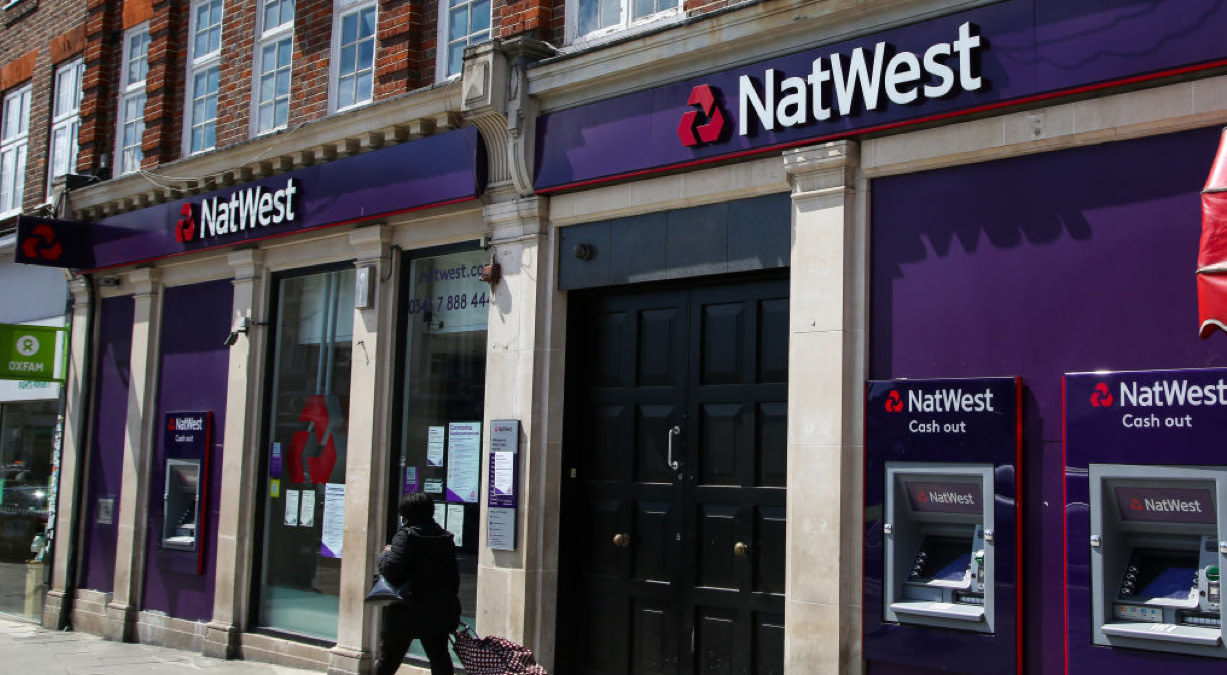NatWest reported first-half income of £7.1bn, down 7.7% driven by lower net interest income. Income improved over the half, with second-quarter income of £3.7bn ahead of expectations and up 5.3% on the first quarter.
Net interest margin fell from 2.23% to 2.07%. There was improvement quarter-quarter from 2.05% in the first, to 2.10% in the second.
Pre-tax operating profit of £3.0bn was down 15.6%. Profits were weighted to the second quarter which benefited from an impairment release as defaults remained low and the economic outlook improved.
The group’s CET1 ratio, a key measure of financial strength, is 13.6% - in the middle of the 13-14% target range.
Full-year guidance has been upgraded, now expecting net interest income of £14bn (previously £13-13.5bn).
The shares rose 7.7% in early trading.
Our view
NatWest has just delivered a knockout set of results, beating expectations over the second quarter on pretty much every metric that matters. Performance isn’t as good as this time last year, but markets have been expecting that for some time. It’s about looking forward now, not back.
As a traditional lender, loan default rates are an important risk to watch for. Impairment charges (money put aside in anticipation of more people defaulting on loan payments) were yet again better than expected as customers continued to show remarkable resilience in the face of higher interest rates. We think it's reasonable to expect low default rates to continue over the rest of the year.
Deposits make up the other side of the equation, and we continue to see retail customers searching for better rates from longer-term savings accounts. That's been an ongoing headwind over the past year. But crucially for NatWest, the pace of deposit switching has slowed significantly. That's good news for margins - something for investors to monitor.
Costs are a challenge and a key focus for the new CEO. We've been pleased to see continued progress on this front - medium-term targets look for sub 50% cost-income ratio but we don't expect that to come anytime soon.
Mortgage pricing has been a pain point, as more profitable business written over the pandemic was replaced. But that headwind won’t be material moving forward, as the spread (profitability) of new business and existing business is now the same.
There's also the benefit of the structural hedge - think of this as a bond portfolio that's set to roll on to better rates over the coming years. NatWest is rolling off some of the lowest rates in the sector, and should be one of the biggest beneficiaries.
We were pleased to see the income guide pushed higher, as management finally felt confident to ditch its expectation of 5 interest rate cuts this year, down to a more realistic two. But we still think the £14bn guide underestimates some of the positive moving parts, given it essentially assumes second-half income will be the same as the first.
We see NatWest as one of the best-placed UK banks to benefit from several sector tailwinds. The investment case is further supported by the 5.2% yield and potential for buybacks, backed up by the strong balance sheet. But no returns are guaranteed, and the valuation isn’t as attractive as it was earlier this year as sentiment toward the sector has improved.
Environmental, Social and governance (ESG) risk
The financials sector is medium-risk in terms of ESG. Product governance is the largest risk for most companies, especially those in the US and Europe with enhanced regulatory scrutiny. Data privacy and security are also an increasingly important risk for banks and diversified financial firms. Business ethics, ESG integration and labour relations are also worth monitoring.
According to Sustainalytics, NatWest’s management of material ESG issues is strong.
NatWest is resolving some longstanding issues but still faces legal challenges and subpar money laundering policies. Its product management lacks detail and oversight, posing risks under new consumer protection laws. Although there are gaps in data privacy and security, NatWest effectively mitigates cyber threats. Last year’s governance issues relating to CEO conduct still weigh on sentiment, though a new Chair and CEO are now in place.
NatWest key facts
All ratios are sourced from Refinitiv, based on previous day’s closing values. Please remember yields are variable and not a reliable indicator of future income. Keep in mind key figures shouldn’t be looked at on their own – it’s important to understand the big picture.
This article is not advice or a recommendation to buy, sell or hold any investment.No view is given on the present or future value or price of any investment, and investors should form their own view on any proposed investment.This article has not been prepared in accordance with legal requirements designed to promote the independence of investment research and is considered a marketing communication.Non - independent research is not subject to FCA rules prohibiting dealing ahead of research, however HL has put controls in place(including dealing restrictions, physical and information barriers) to manage potential conflicts of interest presented by such dealing.Please see our full non - independent research disclosure for more information.


